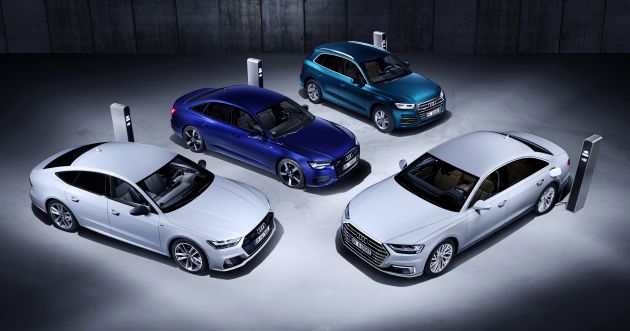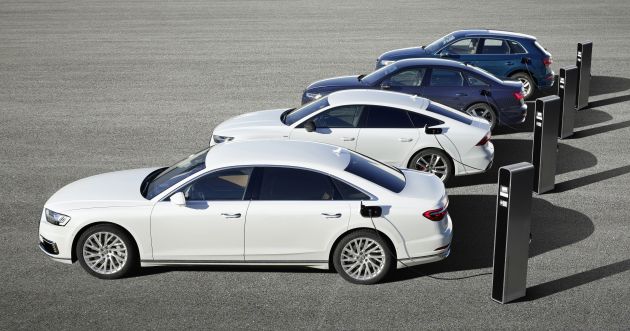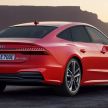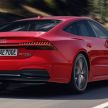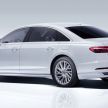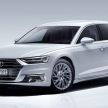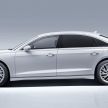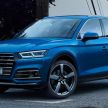Ahead of this year’s Geneva Motor Show, Audi has revealed a quartet of plug-in hybrid variants of the A6, A7 Sportback, A8 and Q5. These vehicles, along with future PHEVs from the carmaker, carry the ‘TFSI e’ designation, with ‘e-tron’ being reserved exclusively for its all-electric cars.
These new plug-in hybrid variants feature a turbocharged petrol engine, which works with an electric motor that is integrated in the transmission. A lithium-ion battery located beneath the luggage compartment floor powers the e-motor.
In the case of the A6, A7 and Q5, two plug-in hybrid options will be offered. The first is the 50 TFSI e that uses a 2.0 litre four-cylinder engine and seven-speed S tronic dual-clutch automatic transmission, with total system output rated at 295 hp and 450 Nm of torque.
Higher up, there’s the 55 TFSI e that has a more powerful version of the four-pot providing 363 hp and 500 Nm. All models with the 55 TFSI e powertrain also get sportier styling and a more handling-focused suspension setup.
The A8 also comes in two plug-in hybrid versions based on a 3.0 litre turbo V6, starting with the 55 TFSI e as mentioned above. There’s also the 60 TFSI e quattro with 443 hp and 699 Nm, which uses an eight-speed Tiptronic automatic transmission to handle the higher torque loads. Those who want an A8 as a PHEV will only be able to order one with a long-wheelbase body.
All powertrains come with all-wheel drive/four-wheel drive as standard, with 50 TFSI e models having the ability to decouple the rear wheels from the drivetrain to reduce mechanical drag for better efficiency.
Similarly, a 14.1 kWh lithium-ion battery is standard fitment, although with different configurations. On the A6, A7 and A8, the battery is made up of 104 pouch cells combined in eight modules, while the unit in the Q5 uses prismatic cells instead.
Audi says its plug-in hybrid system draws some ideas from its e-tron SUV, and is able to recover up to 80 kW of energy under braking. The carmaker adds that a full charge via cable and a 7.2-kW charger will take about two hours.
Drivers will be able to choose from three drive modes – EV, Auto and Hold – with the first only dependent on electricity as much as the battery charge allows. The second is rather straight forward, as the system will aim for maximum efficiency between the electric motor and combustion engine. Lastly, Hold mode preserves the charge state of the battery for use later.
These modes are tied into the car’s drive modes (comfort, efficiency, auto and dynamic), which are also linked to the suspension and steering wheel systems. The cars also come with an active throttle pedal with haptic feedback when driving in electric-only mode, while predictive efficiency assist computes the most fuel-saving route to a destination, factoring navigation data and the car’s on-board sensors.
Looking to sell your car? Sell it with Carro.

